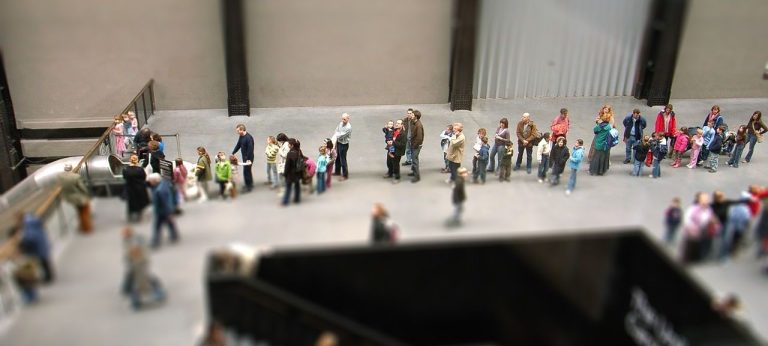It's no secret that the field of criticism as a writing practice—in art, music, literature, what have you—is somewhat lacking in reputation today, despite the predominance of the term. The reasons for positioning criticism as stepchildren are as numerous as its sequences, not least the problem of identifying a common idea or point of orientation when it comes to practice.
A brief tour through the various titles, awards and educational positions could lead one to believe that criticism is alive and well; And maybe it is. But life, the afterlife, or criticism are not my concerns here. Instead, I want to sum up the abbreviated and wholly inadequate topology of art criticism—the child of the family with which I am so familiar—a short bridge, if you will, that will do no lasting harm to those who feel invited to the critical party. They are happy to register their ticket.
It is certainly valid to ask what the fuss is about now – where is the fire? Well, one could point to a recent, and heretofore unimaginable, case of public funding of text-based criticism, which has recently emerged in Germany, and which has prompted some – especially those of us who live in countries where public funding is even more elusive than political reality. – to stare in perverse fascination as one independent magazine drags another into court under the auspices of a defendant who has managed to find a loophole in the financing of print criticism.
I won't rehash the details here, just to say that it gave many of us pause, time to consider the history and legitimacy of the German state's refusal to provide any form of financial support to newspapers, magazines, and printed rags in general.

A view of the Tate Modern. Author: Hiro Kobashi. Source: Wikimedia Commons
And therein lies at least one of the many slippery slopes of criticism. Pushed into the abyss of private and commercial finance, “critics” are either secure because they do not depend on their craft for a living (for example, they have a full-time job elsewhere), or they are at the mercy of their acceptance and publication. Through the few remaining outlets in the printing world (not many). As a former editor of two such magazines (I hesitate to call it criticism at this point; I'll get to that later), I experienced first-hand during nearly four years of work the anxiety of young writers who feared they would be ostracized from the press circle. Ready if they tear something up in the review.
Be careful, just being negative or “critical” doesn't necessarily mean criticizing, at least not for me. This is a very narrow definition, and is more a symptom of the problem than its essence. But the reality of writers living and working in Germany is negatively affected by these conditions, not to mention the salary, which is barely enough to cover the gas bill if you manage to produce three or four novels a month. More than that is unrealistic anyway, given exhibition schedules that last about a month for private exhibitions, and three to six months for larger institutions. We're barely scratching the surface here, and the system of checks and balances is completely out of control.
Would public financing solve such a situation? There is no magic cure, and I wouldn't hitch my wagon to one even if I was briefly pushed to do so. But it is clear that the decision to fund a variety of cultural practices in Germany – experimental theatre, artistic research, spaces to preserve outdated technology – means that they are not under similar existential threat, even if they are not quite thriving. also.
*
I can't say enough about what bureaucrats get to do behind the scenes. But I can, with some experience, speak about the type and quality of art criticism published in Germany. Call it what you will, but in any practice – documentary, memoir, TikTok – there is a field in which things are produced and consumed. Criticism provides a healthy awareness of the limits of this terrain, and thus of its inherent limitations. That people who write for cultural pages can call themselves critics is a recent development, as is submitting your name and texts to a committee to receive an arts criticism award. There are actually about five places to look for criticism published in German. Is it too much to ask the committee to be aware of it? I digress.
Criticism, at least as it developed in the modern field of writing about art, began to be at odds with modernity series, sharpening his teeth against the practice of writing with a deep conviction in and reliance on experience. What seriesElaborate writing failed to take into account the formal complexity and intelligence of the works they considered, relying on the rhythm of their prose and the adequacy of their emotions. In Western Europe, I do not think it is entirely a coincidence that materialist inquiry into the invisible forces of industry emerged almost simultaneously with a critical project whose analysis centered on systems – such as the art market – and the objects that belong to them (read: art). .
Of course, these categories are not a watery and murky field at the moment, but I include this little historical fact if only to pause for a moment about who or what people call a reviewer or critic when they use these things a lot. Offensive terms. Recent symposiums in which such terms have been thrown around can be pointed out with as much criticism and historical blind spots as imaginable, taking for granted the mere act of “writing about art,” an enterprise that sits comfortably among the things produced within a field. Art is called through the thinking of individuals.
A cursory comparison between exhibition texts produced and promoted by commercial galleries and those published in supposedly “independent” art publications reveals that not only is there no noticeable difference in quality, but that the authors of said texts are often one and the same. Again, no malice from me. People have to earn a living, but this puts the issue of public financing of independent cash at a high level of comfort. Magazines depend almost entirely on advertising to support their costs, and no institution or gallery, no matter how financially capable, will put money into a publication that does not bother to write about one of its exhibitions.
Most people behind the scenes would deny such claims, or dismiss them in other ways, but it is an almost universal truth: independent arts publishing does not exist, at least not in the way the German government uses it as a justification for refusing to fund writing about art and culture. It's like a simple logical formula. If the opposite of a certain axiom is true, you have your proof. Here, if there is no independent writing, free from the forces of influence, then the government's decision to stay out of the game is based on falsehood.
This is not to mention the effects that this situation has on the practice of criticism, which is of course linked to this reality, and which, in my opinion, is greatly exacerbated by it. I'm sure many will point to the projects of books, catalogs and other ephemera that have received some funding from the state as part of a larger endeavour. But having published in academia and in the journal industry, I can confirm that there is one stark difference: speed. The time and format it takes for an edited book or volume to appear means that whatever arguments, ideas, proposals, analyzes or whatever contributed to its final form are so old that they no longer maintain any critical tension with their subjects – the ship has sailed.
For a university, peer review is a guarantee of scientific security. Like the series From 19y In the twentieth century, criticism runs counter to these safety measures, which were written and produced as such without the usual frame of reference and institutional support. One journal I edited went so far as to have a policy of not publishing footnotes – ever!
There's currently so much anxiety about ChatGPT taking over marketing and publishing departments that the conversation is in danger of being completely disconnected from the pressures of writing about art, music, or anything else. However, if only to offer a few words of caution, it is important that the reasons why the German government might reject government funding for criticism are as vague as the field of criticism itself. Are writers today safer in the belief that they are not influenced by interests that might threaten their freedom of expression?
I don't know, that's the short answer, but I can say that after working closely with young writers, I've never heard those sentiments expressed, either for or against. These individuals were very concerned with securing the next gig and making sure they got paid for the current gig.
*
For many of us in the field, there is an enormous freedom in not having to align with a particular school or ideology when writing about art. But the time needed to consider, think, and formulate something appropriate to the complexity of what we experience has evolved in parallel with our freedom from grand narratives and controlling voices. Really, the elephant in the room is: Why isn't writing equal to art?
Assessing such a situation necessarily invites all the old ghosts into the room, those we would have been happy to eradicate; If it were not for critical judgment, I think the entire field would have to be called something else. The fact that criticism today is a byproduct of other systems – the press release, marketing departments, promotion, hype, etc. – that bear little or no resemblance to the forces of yesterday does not necessarily signal the end of criticism, or what Bruno Latour celebrated. When he wrote: “Why is Ssteam running out of cash.”
If he meant hot air – well, good riddance. The quality and type of critical writing produced is one issue, but the larger question of arbitrarily refusing to fund wonderful small publications that could provide their writers with a modicum of shelter from market fluctuations is certainly something worth reconsidering, without necessarily dragging in your colleagues. To court in order to do so. No sane person can imagine criticism as today's ideology, or even a decent source of livelihood, while the subsidized fields – art and artistic research chief among them – are equally vulnerable to the erosion of judgement, time and careful study.

